The Project
The Spitallamm dam is one of two dams on Lake Grimsel. The water stored in the dams is essential for electricity production at Kraftwerke Oberhasli (KWO). The Spitallamm dam is now over 90 years old and in need of renovation. Instead of renovating the old dam wall, KWO will build a new one directly in front of it. Work on this project will start in June 2019 and should be fnished in 2025. By building a new replacement structure, KWO is making sure that the water from Lake Grimsel can be used in the long term without placing any restrictions on the production of electricity.
The architects and builders of the Spitallamm dam adopted pioneering techniques in the 1930s. The dam on Lake Grimsel was one of the first large arch-gravity dams, i.e. a dam that uses its weight and the support bracings in the rock to the left and right of the dam to hold back the water. The Spitallamm dam was built between 1925 and 1932. The downstream side of the dam is divided into distinctive levels set at regular intervals and measures 114 metres from the foundation to the crest. This made it one of the tallest dams in the world when it was built. The famous Hoover Dam in the US – also an arch-gravity dam – was completed in 1935, the Mauvoisin dam in 1957 and the Grande Dixence dam in 1961.
KWO also built the Seeuferegg gravity dam at the same time as the Spitallamm dam. The two dams have since allowed for the damming of Lake Grimsel. With an impoundment volume of around 94 million cubic metres, this is by far the most important water reservoir for KWO’s electricity production operations.
-
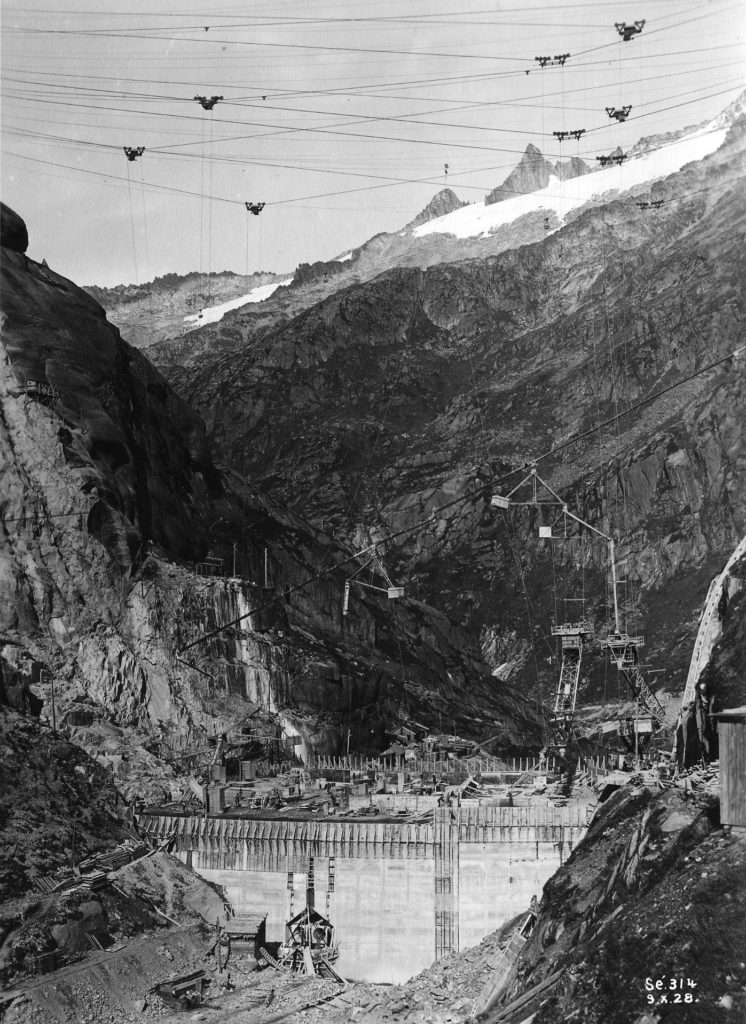
1928 -
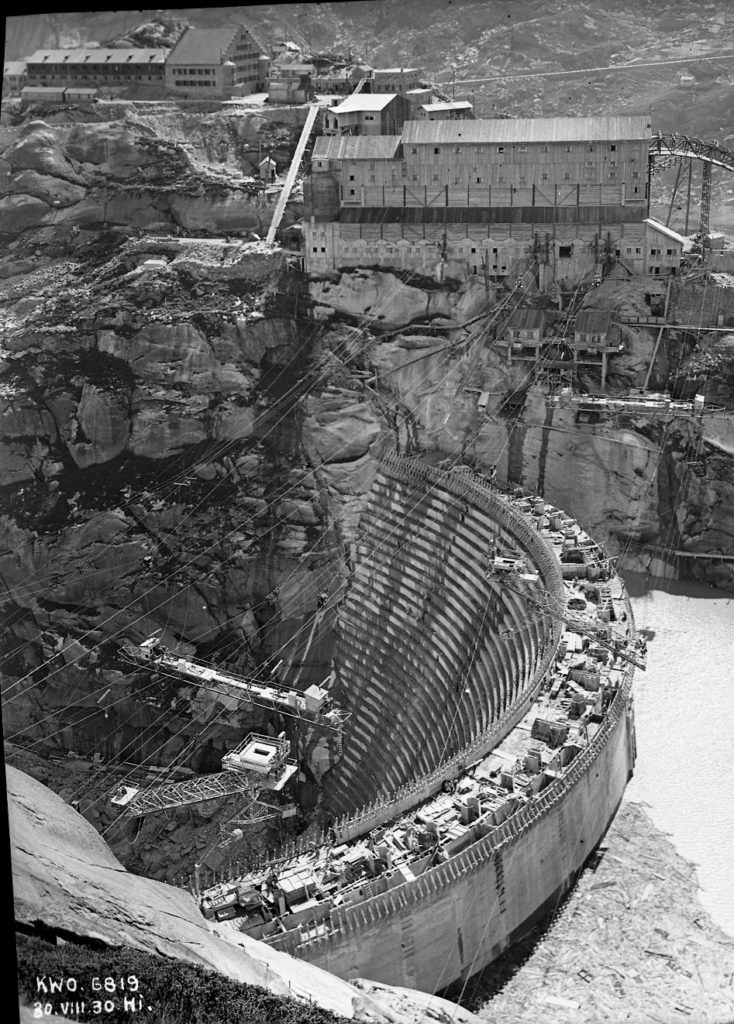
1930
Following in-depth investigations and tests in the 1960s, it was revealed that there is a “vertical separation” in the structure of the Spitallamm dam due to the construction methods used when it was built and the subsequent repairs. This means that the dam crest and the face concrete of the Spitallamm dam (blue) had begun to separate from the rest of the dam, i.e. the mass concrete (green), and to move towards Lake Grimsel. This separation has become more pronounced over the years.
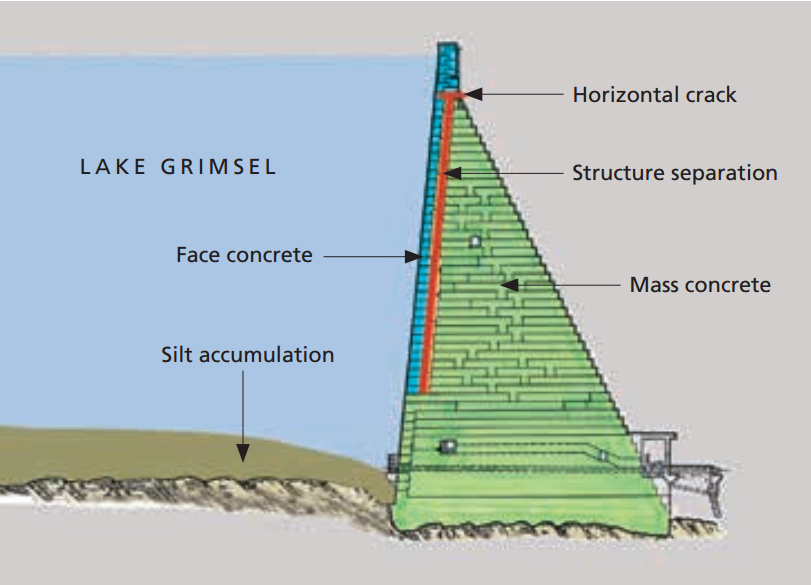
Cross-section of the existing dam wall with the structure separation and silt acumulation
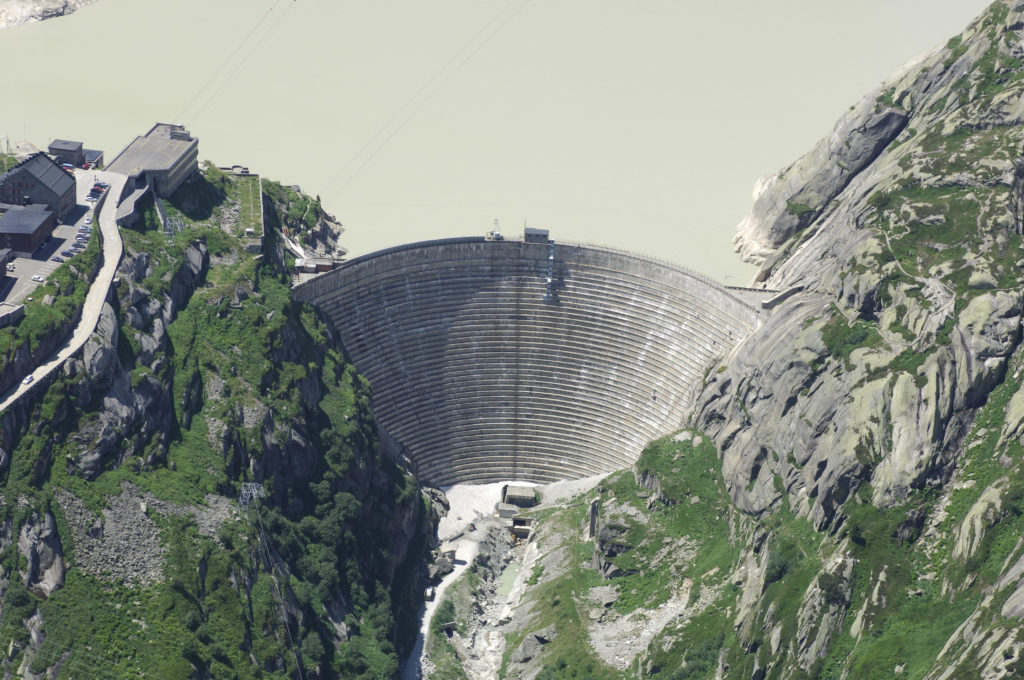
The people responsible for the dam at KWO came to the decision to carry out the necessary renovation work as part of a project to potentially increase the height of the two dams on Lake Grimsel. The project planners hoped to break off the face concrete and replace it with new concrete, which would be better anchored to the existing dam wall, i.e. the mass concrete. Further investigations, however, showed that an alkali aggregate reaction (AAR) may take place in the mass concrete of the dam wall, an undesirable chemical reaction that can cause long-term concrete damage. In addition, an increasingly large amount of sediment collected in front of the dam, which led to accumulation on the lower discharge installations on the lake side of the Spitallamm dam.
Due to these findings, KWO refrained from renovating the wall and instead began planning to build a new structure in
autumn 2015. This was also because the federal supervisory authority for dams, the Swiss Federal Office of Energy (SFOE), demanded that KWO submit a construction project for approval for the repair of the Spitallamm dam by 2017 – irrespective of whether the dam on Lake Grimsel could be made taller or not. In mid-May 2017, KWO submitted a building application with the corresponding environmental impact assessment (EIA) to the Canton of Bern for the construction of the new dam. KWO estimates that the construction costs will total around 125 million Swiss francs.
In June 2019, KWO will now start building a new, double curvature dam, which will stand directly in front of the old dam on the side facing the valley. The old Spitallamm dam will be preserved and flooded at a later date. The water pressure exerted by Lake Grimsel will in future be absorbed by the new dam, and a tunnel next to the old dam wall will ensure that the water level is balanced hydraulically.
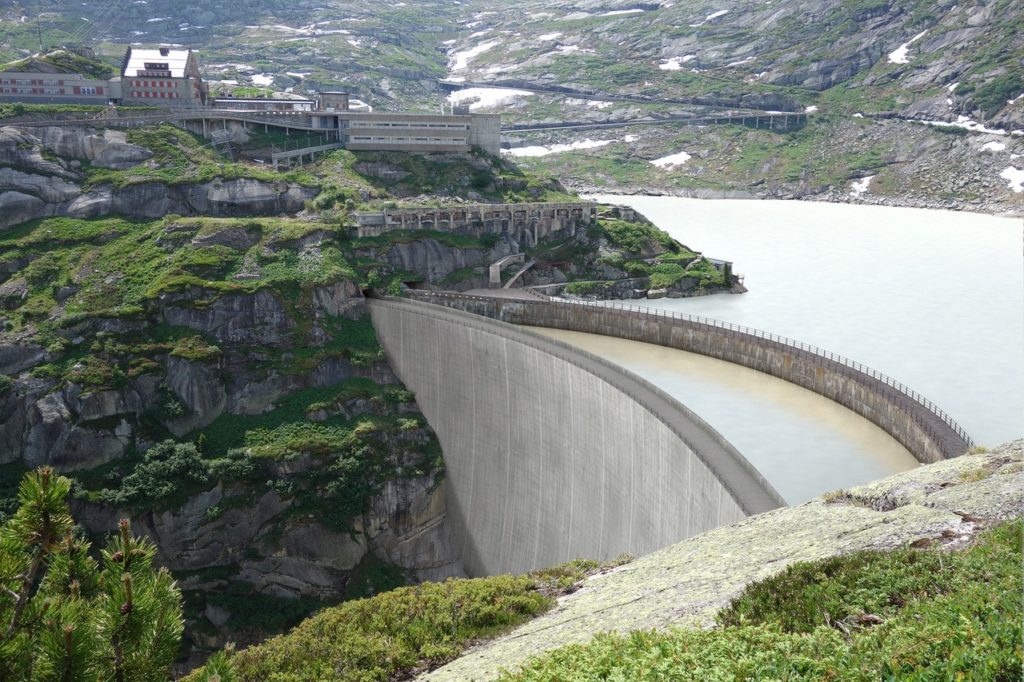
Construction work in the mountains at almost 1,900 metres above sea level is extremely demanding in terms of logistics. The work will take place seven days a week from May to October over the course of six years. The crest height of the new dam will also be around 113 metres and the crest length around 212 metres. This will involve approximately 215,000 cubic metres of concrete being used. A large part of the gravel required for this will be processed from the excavated material and taken from the nearby landfill at Gerstenegg.
The construction site is clearly visible from Grimselnollen, the site on which the Grimsel Hospiz hotel stands. More than 90 years after the construction of the first dam, construction machinery will once again be making the journey up to the Spitallamm dam. Starting in 2020, KWO wants to give visitors to Lake Grimsel a detailed tour of the spectacular mountain construction site.
Submission of application for planning permission: May 2017
Start of construction: June 2019
Construction time: from May to October over the course of six years
Type: double curvature dam
Volume of concrete: 220,000 cubic metres
Costs: approx. CHF 125 million
Impoundment volume of Lake Grimsel: 94 million cubic metres
